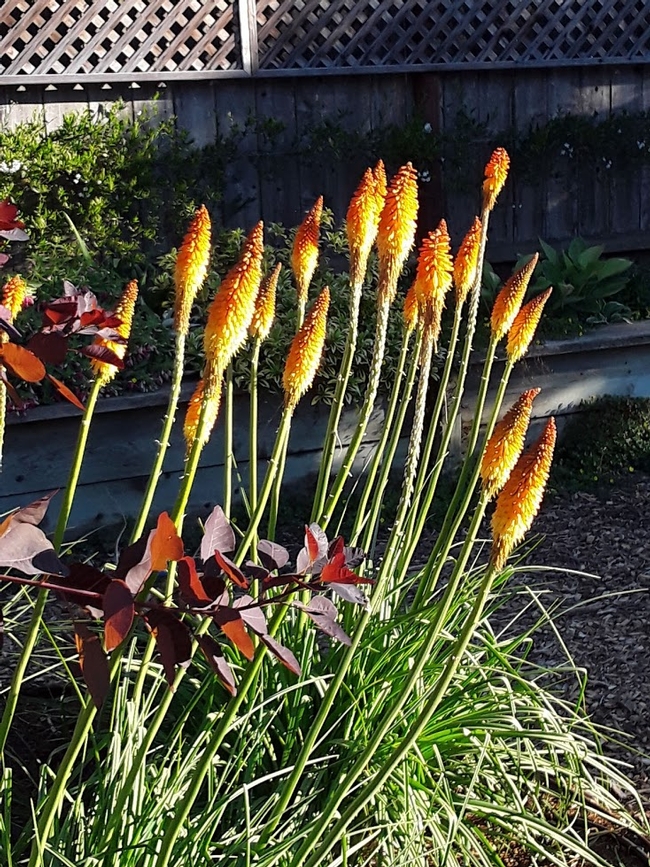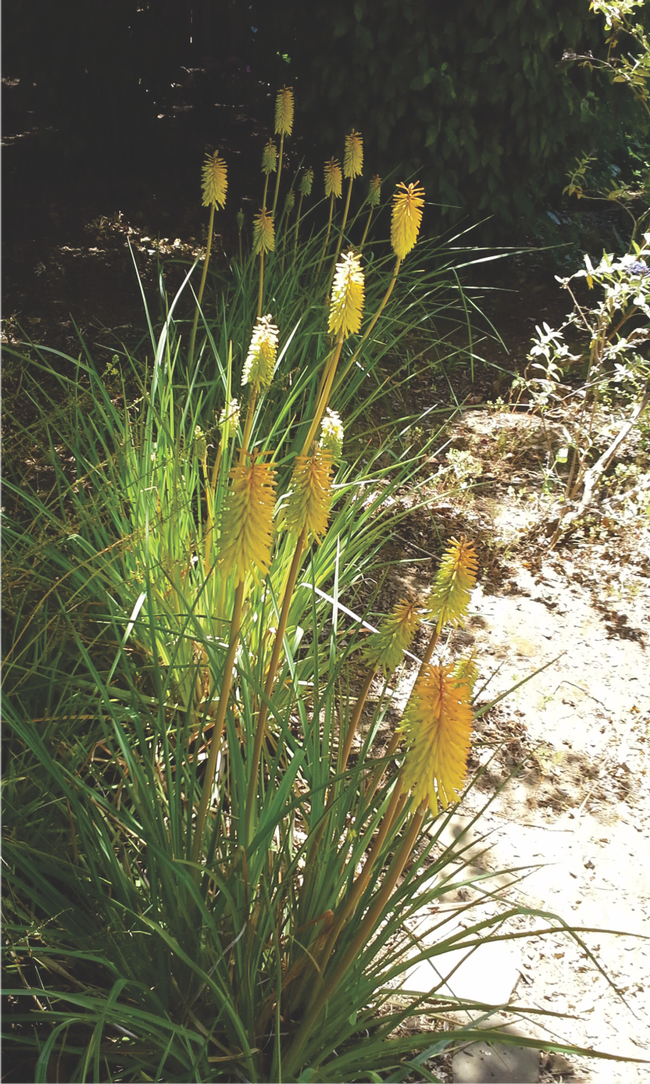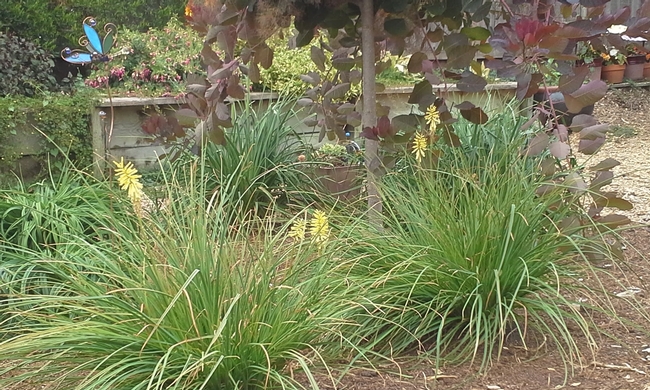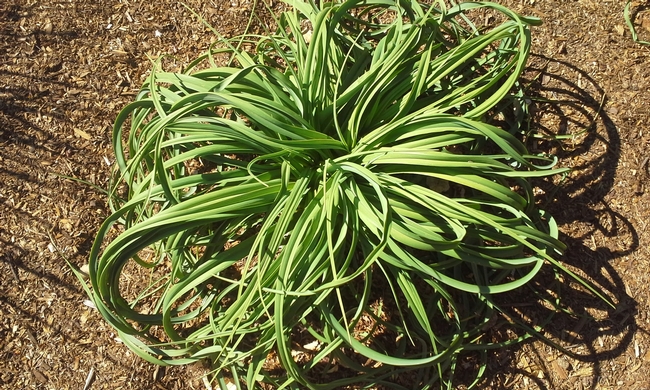By Melody Kendall


The variety of Kniphofia commonly seen in my neighborhood is uvaria. The leaves of these clumping plants are long, thin and grass-like, and the clumps grow to be 2-3 feet wide and tall. The long lasting flowers do look like red hot pokers or upright torches on long stems that can sometimes reach 5 feet tall. Each of these multiple stems terminate in a 4+ inch multi petaled cone shaped flower that graduates from a base of light yellow to the top of deep crimson. For the best performance, plant these rhizomatous perennials in full sun. The plants will still perform in partial shade, but flower production will be greatly reduced. Bees and hummingbirds flock to these brightly colored blooms throughout the blooming season. Kniphofia prefers well drained, moist but not wet soil. If you deadhead spent blooms on plants the blooming season will be extended. In the fall, cut off the dead foliage around the base of the plants and clumps can be dug up and divided, if desired. If left as is, they will continue to expand outward without decline in floral display or decline the plant's leaves and summer blooms. So, if you don't plan on moving the plants any time soon make sure to locate them where they have room to grow.

In general appearance ‘Lemon Popsicle' is a miniature version of the larger uvaria with thinner, more grass-like leaves. Blooms of this variety do look like lemon yellow ‘popsicles' with blooms that are not as dense and have shorter stems than the uvaria. They are still cone shaped, prolific and are pollinator magnets.

The uvaria blooms from May thru June and the ‘Lemon Popsicle' June thru July and the ‘Limelight' July thru August, so we have these spectacular blooms all summer long. The hummingbirds and the bees are happy, and I just discovered that the Kniphofia blooms do well as cut flowers. What's not to like about this tough garden workhorse?
Napa Master Gardeners are available to answer garden questions by email: mastergardeners@countyofnapa.org. or phone at 707-253-4143. Volunteers will get back to you after they research answers to your questions.
Visit our website: napamg.ucanr.edu to find answers to all of your horticultural questions.
Photo credits: Mel Kendall
Information links:
UCMG Santa Clara County http://mgsantaclara.ucanr.edu/garden-help/water-wise-plants/?uid=55&ds=833
Jepson Herbarium-UC Berkeley https://ucjeps.berkeley.edu/eflora/eflora_display.php?tid=29921
Missouri Botanical Garden
https://www.missouribotanicalgarden.org/PlantFinder/PlantFinderDetails.aspx?kempercode=i310
Lemon Popsicle